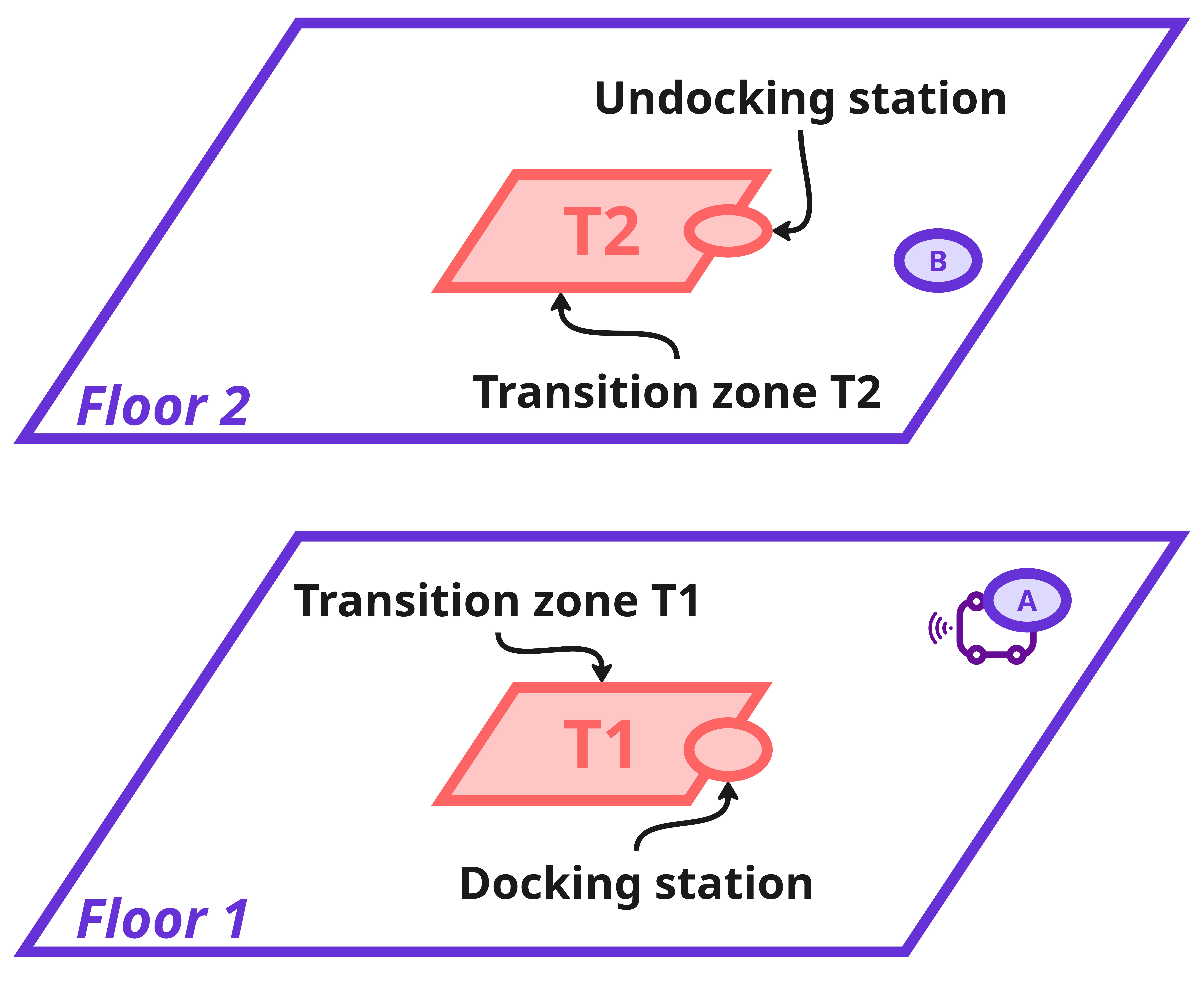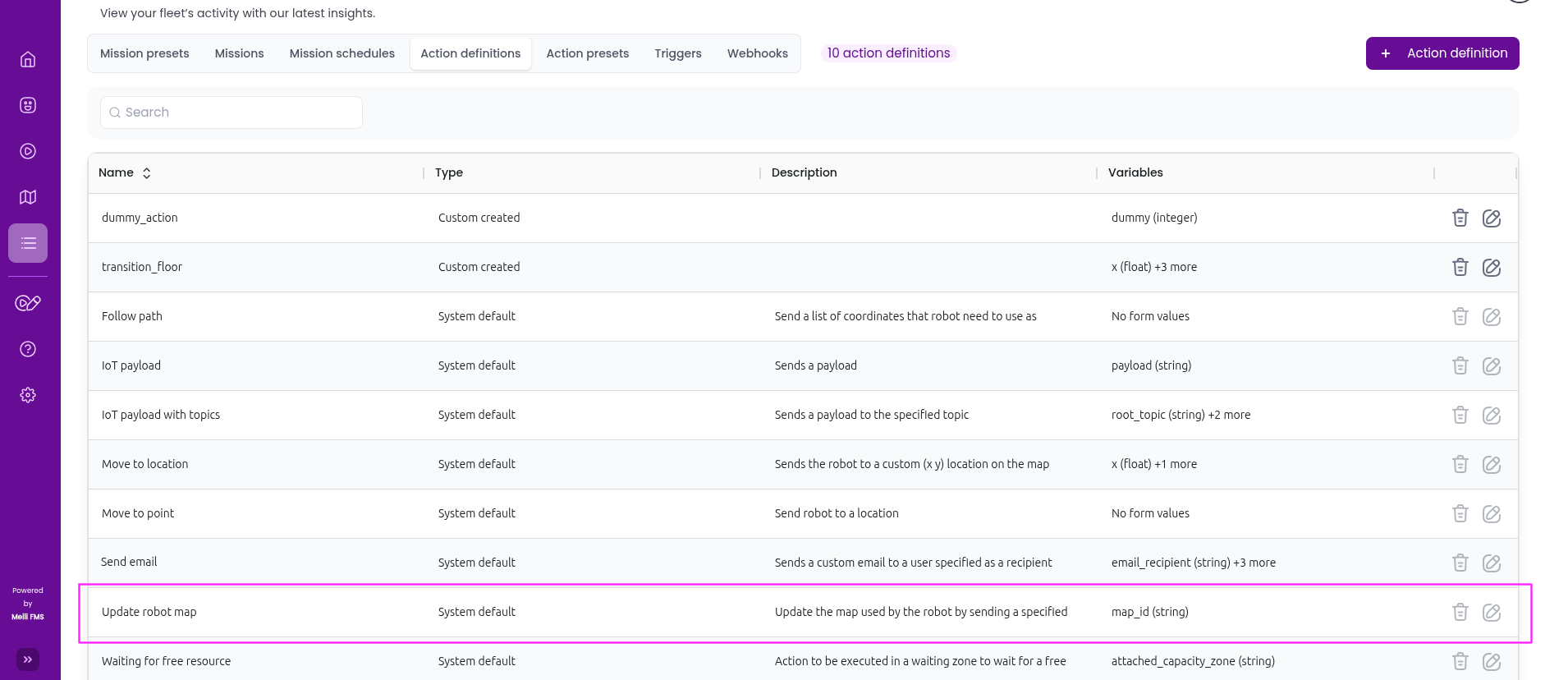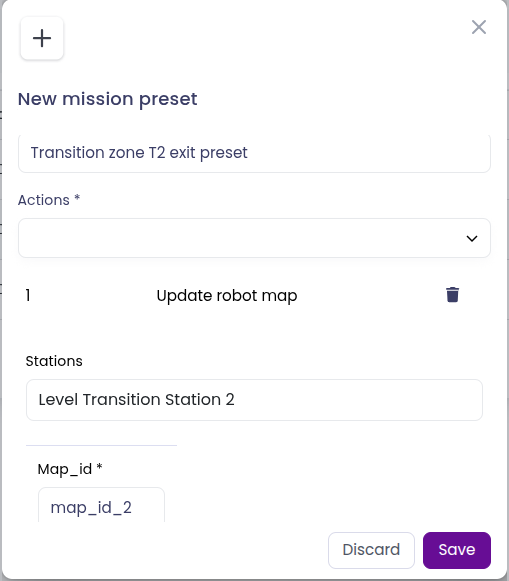Floor Change Process#
Level Transition Flow#
Transition Zones allow users to define Entry and Exit Presets for each zone. These presets determine the robot’s behavior, such as docking/undocking, calling an elevator, or sending custom messages to elevators or other devices.
During a floor change, the Entry Preset of the starting floor zone and the Exit Preset of the destination floor zone are executed.
For example, to move from Point A to Point B:

The transition flow involves the following steps:
-
Docking – Move from Point A to the docking station of the transition zone.
-
T1 Zone Entry Preset – Execute user-defined actions, such as:
- Calling an elevator
- Performing a robot docking routine
- Sending user notifications
-
T2 Zone Exit Preset – Execute user-defined actions, such as:
- Calling the elevator again
- Opening the elevator door
- Performing a robot undocking routine
This preset must include the
Update Robot Mapaction.
This action updates both the robot and the system to reflect the new floor location. -
Undocking – Move from the zone’s undocking point to Point B.

Update Robot Map Action#
The Update Robot Map action is a default system action. It can be replaced with a user-defined action if the robot does not support the standard format. Triggering this action performs the following:
- Places the robot on the target map at the undocking station of the destination floor.
- Sends a message to the robot updating its internal map ID and setting its location based on the coordinates of the destination map.

This ensures that both the Meili system and the robot are synchronized regarding the completed floor transition.
Important: This action is not automatic. Users must add it manually, ideally in the Exit Preset of the destination Transition Zone. The sequence of actions is configurable by the user.
Parameters#
When adding this action to a preset, specify the following:
- Station – Set to the undocking station of the destination zone.
- Map ID – Use the system-defined map ID (not the robot’s internal map name).
The system automatically converts this ID to the robot’s internal map name using the user-defined Map IDs and sends it to the robot.
